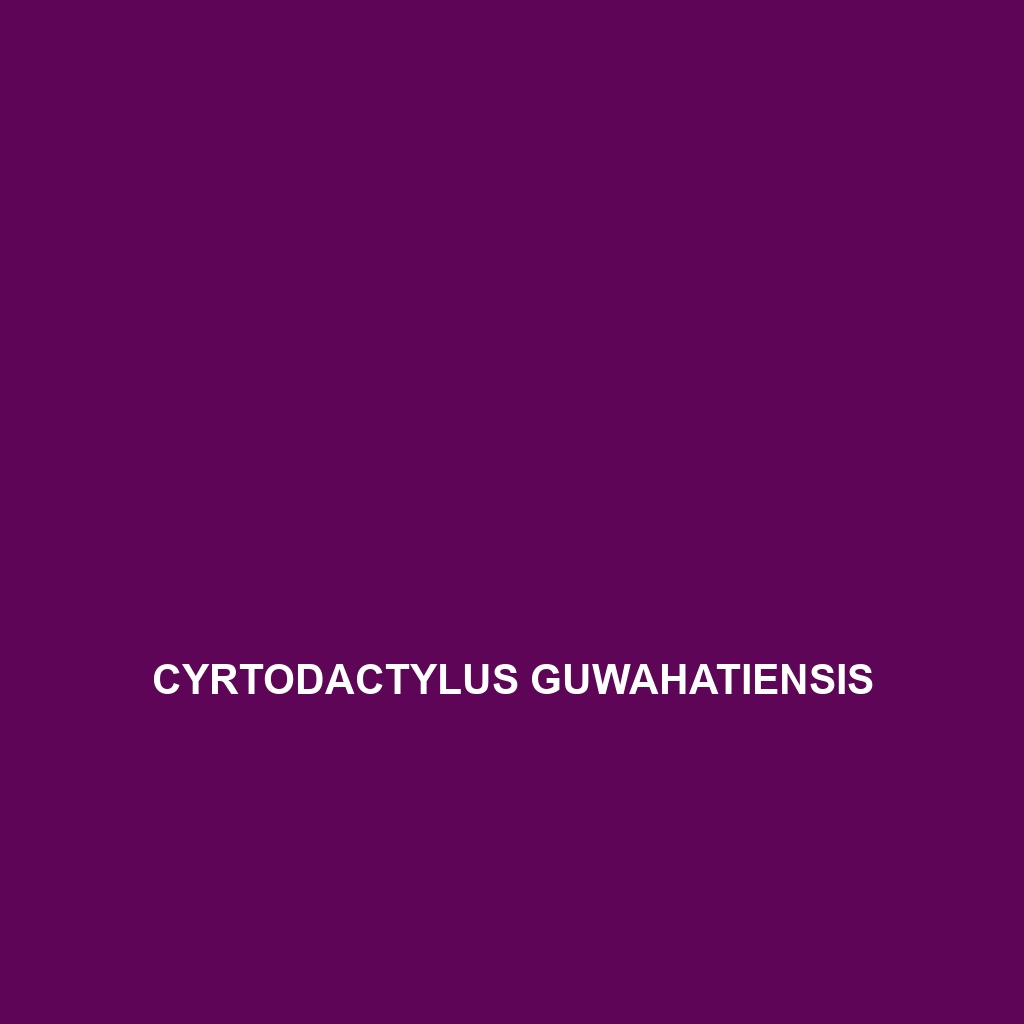Cyrtodactylus gunungsenyumensis Species Description
Common Name: Cyrtodactylus gunungsenyumensis
Scientific Name: Cyrtodactylus gunungsenyumensis
Habitat
Cyrtodactylus gunungsenyumensis is primarily found in the tropical rainforests of Southeast Asia, particularly in Malaysia. This species thrives in humid, densely vegetated areas at higher elevations, typically around the mountainous regions of Gunung Senyum. The geophysical features of its habitat provide the ideal environment for shelter and hunting.
Physical Characteristics
This gecko species is characterized by a medium size, averaging about 10 to 15 cm in length. Its coloration is predominantly brown with intricate patterns of darker stripes, which serve as effective camouflage against the forest floor. Notable features include its elongated body, flattened head, and large, expressive eyes that enhance its night vision. The toe pads are specialized for climbing, allowing Cyrtodactylus gunungsenyumensis to navigate its arboreal habitat efficiently.
Behavior
Cyrtodactylus gunungsenyumensis exhibits nocturnal behavior, being most active during the night as it hunts for prey. It is known to be a solitary species, displaying territorial tendencies, especially males during the mating season. The gecko employs a blend of stillness and stealth to ambush insects, while also using its agility to escape potential predators.
Diet
The diet of Cyrtodactylus gunungsenyumensis primarily consists of insects such as crickets, beetles, and moths. This insectivorous diet is crucial for its energy needs and growth. The gecko utilizes its keen night vision to locate food, showcasing agile hunting techniques that involve ambushing and pursuing its prey.
Reproduction
Cyrtodactylus gunungsenyumensis breeds seasonally, with mating typically occurring during the wet months. The female lays a clutch of one to two eggs, which are usually hidden in leaf litter or crevices to protect them from predators. The eggs incubate for several weeks, and upon hatching, the young geckos are independent and mature rapidly, adapting to their lush environment.
Conservation Status
The current conservation status of Cyrtodactylus gunungsenyumensis is classified as vulnerable due to habitat loss from deforestation and land conversion for agricultural practices. Efforts are underway to study its population dynamics and assess the networks of protected areas that can conserve this unique species.
Interesting Facts
An interesting fact about Cyrtodactylus gunungsenyumensis is its ability to change color slightly for better camouflage, blending with its surroundings to evade predators. This adaptation is particularly crucial in its densely forested habitat, where visual predators abound.
Role in Ecosystem
Cyrtodactylus gunungsenyumensis plays a significant role in its ecosystem as both predator and prey. By controlling insect populations, it helps maintain the ecological balance. Additionally, it serves as a food source for larger predators in the food chain, thereby contributing to biodiversity within its rainforest habitat.
